Although its theme is communication, choreographer Arkadi Zaides is not quite ready to talk about his new work in progress. He has begun an artistic dialogue between Arab and Jewish artists from different fields: Rabie Khoury, an actor, Ofir Yudilevitch who does capoeira, Muhammed Mugrabi, a rapper, and Arkadi himself. For now, it is a private conversation taking place between the four artists, in preparation for a December premiere. In the meantime, just days before Arkadi took off for the Shanghai Dance Festival in China, we chatted over dinner about dance, culture, and everything in between.
“I am on a mission,” he says, “I need to undergo a process with myself, grow through these works and learn something.” He is not afraid to take the time needed to explore a subject thoroughly, resulting in works in which the emotional depth is an integral part of their aesthetic. This internal process can be seen at its minimalist extreme in “Solo Siento” which was created for the “Curtain Up Festival” at Suzanne Dellal in 2005. The lyric beauty of his movement language creates its own dialogue as it expresses the internal struggles of the individual.
Yet for Zaides, even a solo is part of a dialogue. Shira Miasnik created the fluid, sensually minimalist video that is far more than a background to Zaides onstage presence. It is tempting to find a theme of duality in his work, as there is a counterpart to this dance – “Solo Colores” created with Itay Weiser for the dancer/choreographer Iris Erez, a work which also communicates with another art form: a sculpture by Isabel Cruellas. Delicate, fragile appearing plant forms in metal, Cruellas’ sculptures are physically demanding to create, and the resulting solo expresses the tensions between internal and outer foces, the intense struggle of the artist which requires both emotional and physical reserves of strength. During the next few weeks Zaides will be taking these works to the Shanghai Dance Festival, the 5th International Dance Film Festival in Budapest, the Kuan Du Arts Festival in Taipei and Session House in Tokyo.
In addition to his work as a choreographer Zaides is very involved in teaching. In 2008 he conducted a series of workshops with Itay Weiser in Magdal Shams, a Syrian Druze village in the Golan Heights. This year, he is leading a series of workshops at the Rabeah Morkus Studio in Kfar Yasif. Despite the fact that the year is still young, Zaides feels that they have already achieved a sense of unity and cohesion and he is excited about working with the group. The three performers in his new project have also conducted workshops for the group, each in his area of expertise. This brings the conversation back to his current project.
After creating two works in which he did not perform – “Solo Colores” and “Brian Wash”, Zaides is returning to the stage. He’s happy about the change, saying, “I still want to move,” but recognizes the difficulties of having to be both inside and outside the work. His multicultural performing troupe of four will soon spend time developing the work in Poznan, Poland, where they will connect with artistic collaborator Joanna Leznierowska, who Zaides describes as “another eye on this project.”
Zaides, who was born in Belarus, feels that as “Brian Wash” was a coming to terms with the country of his birth, Russia, this current project is a coming to terms with “here” – Israel, saying, “This choice has made me more connected to this place.”
Despite not wanting to say too much about a work that is still in its initial stages, Zaides involvement in the project is total and his excitement cannot be repressed as he shows me some (beautiful) photos from the day’s rehearsal. Some elements of the work are already known: “It will contain movement and text. In Arabic – a language which I don’t understand and which most Israelis don’t understand.” It is an intentional choice on Zaides part, as he says, “to let this voice be heard.” While aware that the conflicts between Arabs and Jews are extremely difficult to contend with, Zaides feels that there is “a spark of optimism” in the attempt at communication and joint creation, which “continues as we grow through it. That is the healing – touching upon these issues frees us. It’s like the difference between closing something up in a drawer as opposed to opening it up and looking at what is inside.”
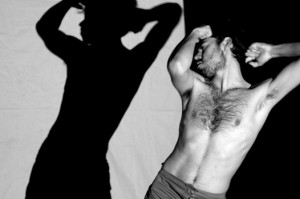
Sólo Colores – Shanghai Dance Festival, China
10-11 Oct. – Shanghai Theater Academy – No 630 Huashan Rd.
info hotline: 63270040
tickets hotline: 63270578
shanghaidance2009@gmail.com
Solo Siento Video Dance – Edit 2009, Budapest, Hungary
Screening at the 5th International Dance Film Festival
Thursday 15.10, Toldi Cinema, V. Bajcsy – Zsilinszky ut 36-38
http://www.bof.hu/2009/program.php?t=kat&id=383&l=en#4103
Sólo Siento & Sólo Colores – Kuan Du Arts Festival, Taipei, Taiwan
Friday 16.10 at 19:30, Saturday & Sunday 17,18.10 at 14:30
TNUA Dance Theater
1 Hsueh-yuan Rd., Peitou, Taipei 112, Taiwan, R.O.C.
Workshop will be given by Zaides at the TNUA Dance Theater
Monday 19.10 at 13:00
tickets: +886-2-28961000 ext:2311
http://kdarts.tnua.edu.tw/festival/activities_13.html
Sólo Siento & Sólo Colores – Session House, Tokyo, Japan
Saturday 24.10 at 19:00, Sunday 25.10 at 18:00
158 Yarai-cho,Shinjuku-ku,Tokyo 162-0805, Japan
Tickets: 03-32660461
Workshops will be given by Zaides at the Session House
21,22.10 (21:00-23:00) & 25.10 (13:00-15:00)
http://www.session-house.net/arkadizaidessolos.html
Image Credit: Iris Erez in “Solo Colores”/Photo: Gadi Dagon

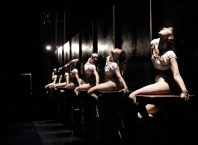
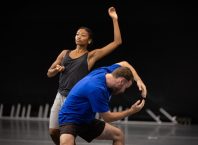
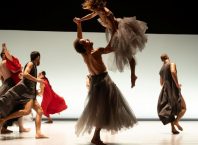
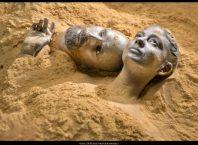
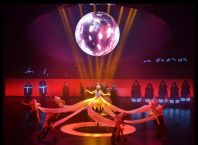
Comments are closed.